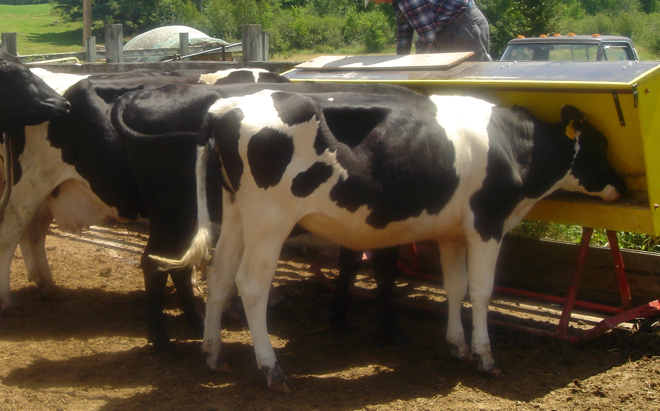
From Dairy Herd Management
Friday, July 27, 2018 - The transition period is the most challenging time during the production cycle of a dairy  cow. One of the major determinants of whether a cow transitions properly is her ability to maintain normal blood calcium concentrations of more than 8.5 mg/dL.
cow. One of the major determinants of whether a cow transitions properly is her ability to maintain normal blood calcium concentrations of more than 8.5 mg/dL.
A recent study reported more than 50 percent of cows and 25 percent of first lactation heifers have blood calcium concentrations after calving in the range considered subclinical.
Subclinical hypocalcemic cows are at greater risk for developing metabolic and infectious diseases after calving. There are nutritional strategies to help reduce the diseases related to low blood calcium.
Calcium is essential for normal cellular activity and function of almost all cells. The metabolic and physiological demands for calcium increases dramatically as calving approaches. The calving process, colostrum production and milk synthesis all have a requirement for calcium and collectively may exceed the available levels in circulation, leading to either subclinical hypocalcemia or clinical milk fever.
The most practical and effective approaches nutritionally manipulate dietary macro-mineral ions, such as chloride, sulfur, sodium and potassium. By feeding a diet higher in the negative ions (chlorine and sulfur) and lower in the positive ions (sodium and potassium), the cow’s blood becomes mildly acidic. This stimulates the physiological processes needed to mobilize bone calcium stores and initiate dietary intestinal calcium uptake necessary for meeting the calcium demands associated with transition. This strategy is referred to as feeding a negative dietary cation-anion difference (DCAD) diet or ‘acidified’ diet. Because some DCAD feed additives are not palatable, it is important to feed a product that promotes a high level of dry matter intake during this period.
The success of a negative DCAD nutritional strategy can be measured using urine pH prepartum and blood calcium levels within the first 24 to 48 hours of calving. Urine pH targets, when samples are tested after three to four days of feeding a negative DCAD diet, should be within the range of 5.5 to 6.0 for all breeds.
COMMENT: The author of this piece has done an excellent job of presenting the DCAD strategy for preventing milk fever. DCAD has been around for decades and requires close controls to avoid deleterious effects. I’m wondering why, if DCAD is so effective, we still have 50 percent of adult cows calve with milk fever?
A better plan is to insure the close-up cows have a balance of calcium and phosphorus available. Phosphorus deficient cows do not metabolize calcium well and are more prone to hypocalcemia. Check out our ABC mineral programs to provide balanced macro and trace minerals.
Learn more at this link